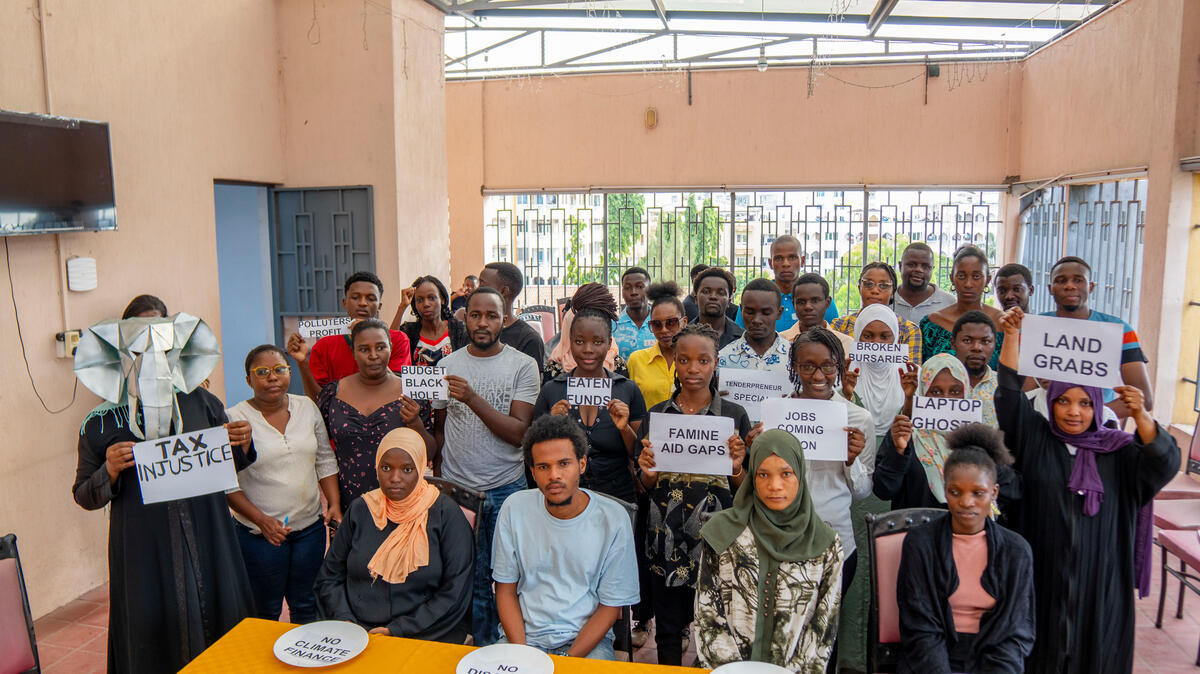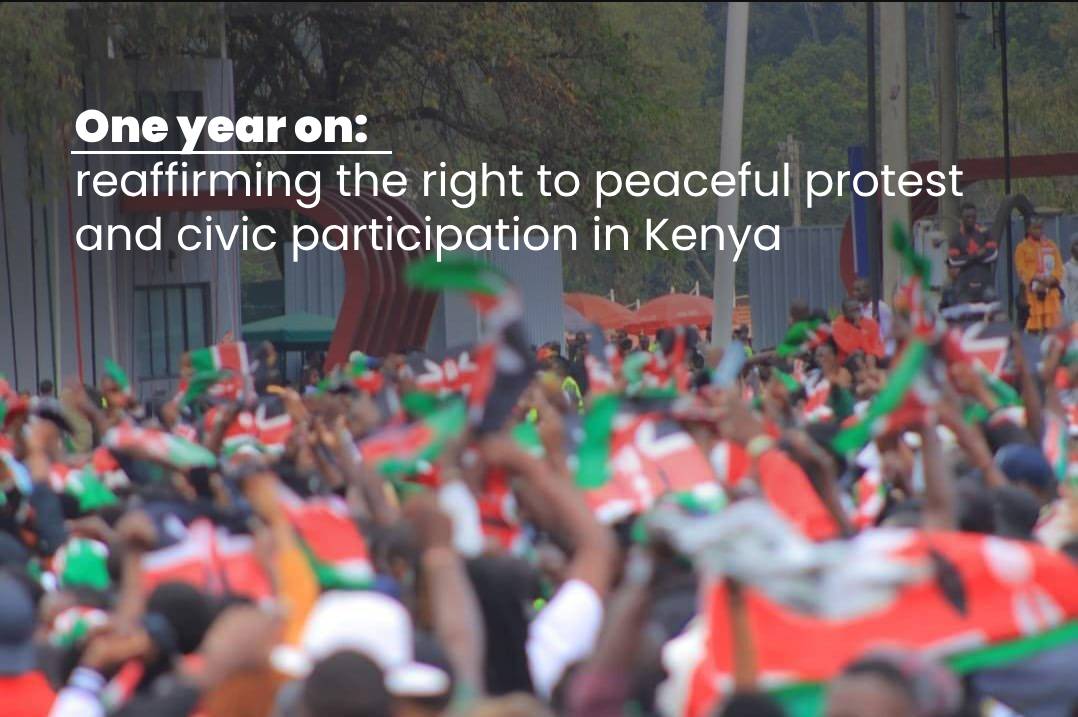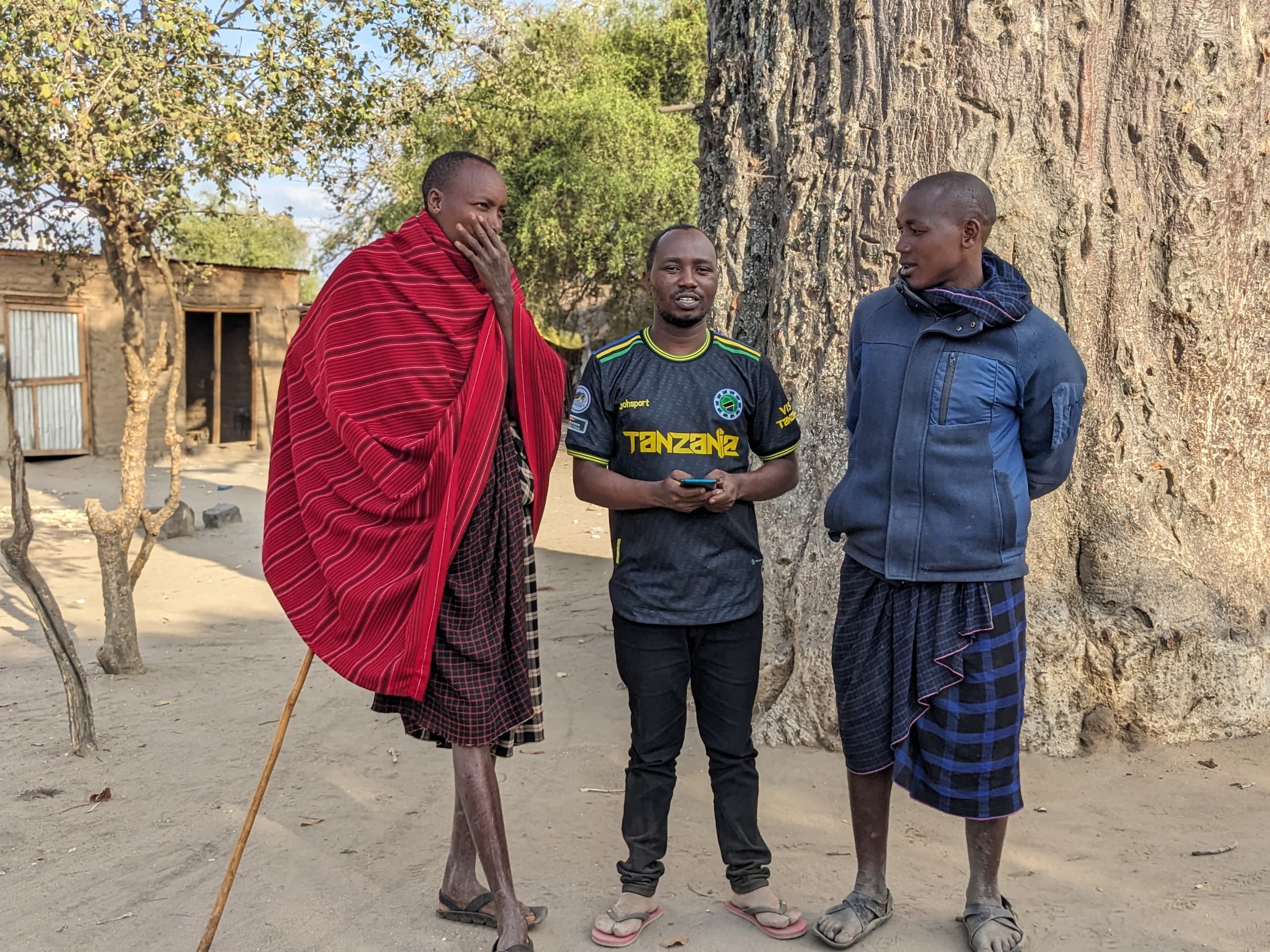It’s about that festive time, and like the rest of the world, consumption is at its peak in Kenya. During this period, almost everything revolves around celebrations, which then revolves around consumption- because we are buying into the festivity idea, which means choosing on impulse instead on a needs basis.
This is when wants and needs ferociously compete, with often, quantity superseding quality! But at what cost? Ever wondered where all the waste from this mindless consumption goes and whether you needed whatever you so hurriedly acquired? Probably not! At this year’s MAKE SMTHNG event on the 25th and 26th of November 2022 at Planet One Ubunifu Hub, we celebrated the spirit of collaboration and making instead of buying new.
From buying to making: A paradigm
Make SMTHG begins at the height of the Christmas shopping holidays and is an initiative that seeks to counter unsustainable consumption. The idea is to shop less, make more and, by extension, take positive action for a better world! MAKE SMTHNG is an annual global movement with participants from across the globe.
“Conscious consumerism goes beyond just buying a sustainable product. It is about a consumer understanding what they are buying and why they are buying it. The consumer must also understand the product’s life cycle and how it impacts the environment,” Whitney Ambasa, a Marketing Specialist at Africa Collect Textiles, said in our Twitter space on ‘How to become a conscious consumer. It is not just about goods, the services we consume also need to be subjected to introspection.
According to Babra Kangwana, founder of the LastShade initiative, the responsibility for conscious consumption is both on the producers and consumers. While consumers (money owners) have the responsibility to control what they buy, it is incumbent on producers to be transparent with information to enable these consumers to make informed decisions. She notes with concern the extent of greenwashing across industries that has derailed progress towards sustainable use for the longest time and need to stop.
Make SMTHNG in pictures and motion
As part of the program facilitation team, I had a unique opportunity to visit the different stands and their setup. For me, marvelous is an understatement: MAKE SMTHNG was a manifestation of communities’ vast and untapped potential, the power of creativity and the desire for sustainability. If anything, we have all the resources at our disposal; a little incentive and systems that work are all we need to propel us towards sustainability.
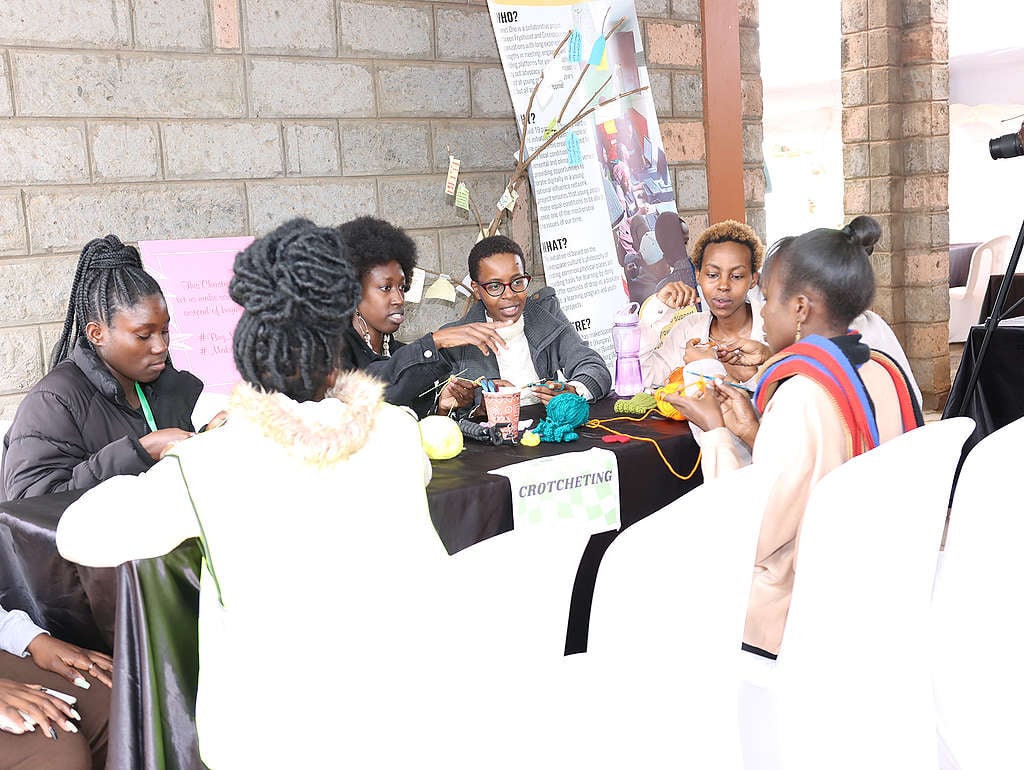
Janet Chemitei is a sustainable fashion advocate and Community Trainer at Ubunifu Hub. Today, she is training about 15 participants (mostly beginners) on the basics of crochet; foundation chains, single crochet and double crochet stitches. Crocheting is fun to watch, challenging to understand but rewarding to learn. She describes crochet as a form of slow fashion that promotes conscious consumerism. “It’s also a form of therapy to deal with mental health problems,” she adds. Chemitei is also in charge of the clothing swap that is happening indoors. A clothing swap is where people exchange clothing they no longer wear for something from someone else’s wardrobe. It is a form of Circular Fashion that allows clothes to last longer since people can wear clothes already in circulation.
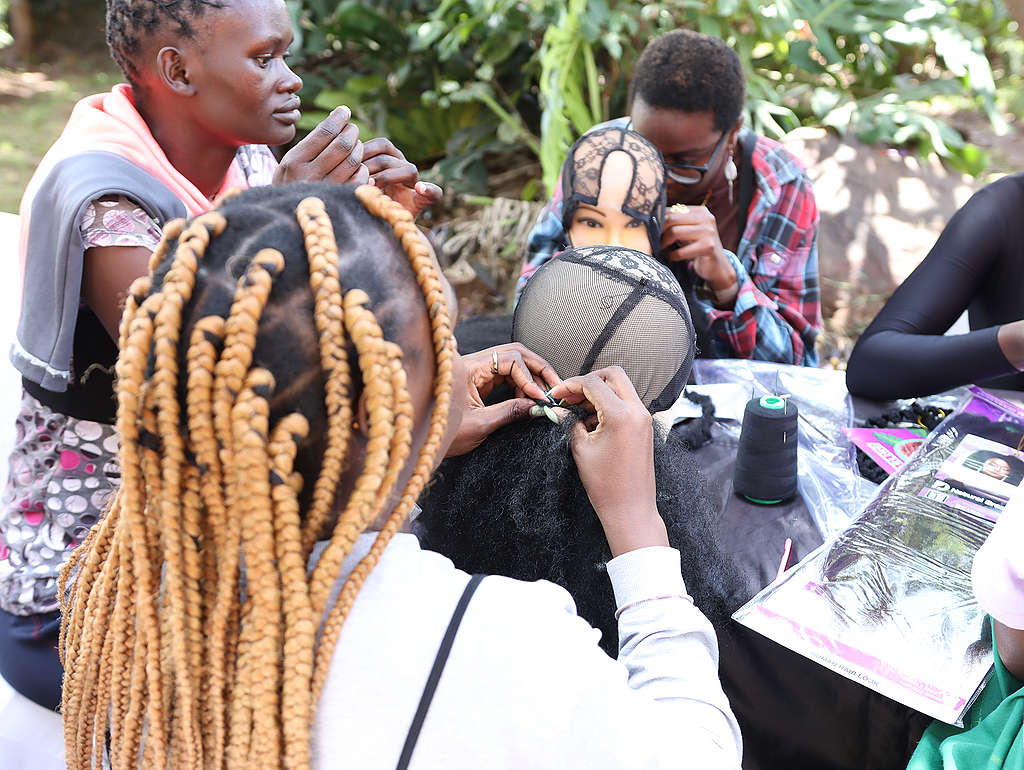
Lynne Beth is a Community Trainer at Ubunifu. Today she is all hands-on, instructing and guiding the curious hair-making team on how to make wigs and temporary dreadlocks. She notes that a lot of braids are consumed to make single-use hair pieces. It is worth noting that braids are made of plastics and there are enormous amounts of waste that comes along with them and is harmful to the environment. Wigs and dreadlocks are a better alternative because temporary dreadlocks last up to a year while wigs can be reused as often as possible, significantly cutting waste.
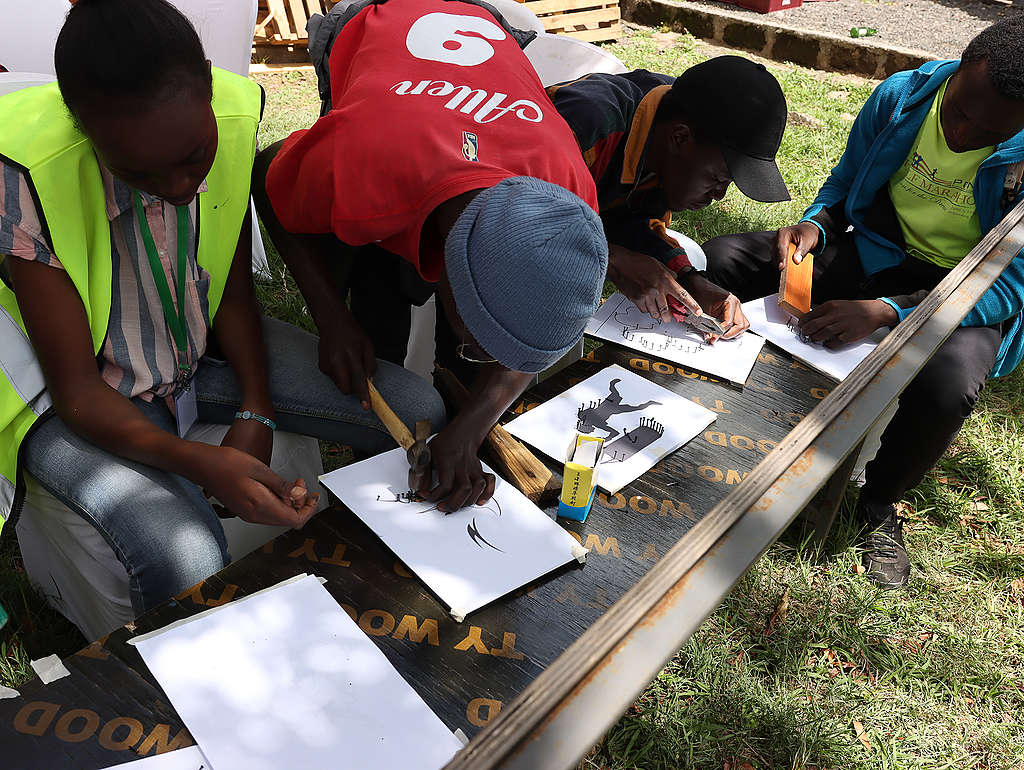
Robert Ruhiu is the founder of Rock Paper Start up- an initiative that leverages waste paper to create building and construction material. Today he facilitates the string art station. To make the string art, art templates are printed out first, then tack nails are hammered onto the outlines of the templates, to which the attendees worked on by attaching the strings around the nails to form the art. This was vital because it helped the attendees acquire the skills to utilize the versatility of bamboo as a Do it Yourself (DIY). According to Robert, bamboo can be used as an alternative to single-use plastics, metal and cement, reducing environmental pollution.”We can also use it to make environmentally-friendly products like toothbrushes and cutlery.” Using bamboo also significantly reduces the pressure on forests for raw materials. On the other hand, the String art enabled participants to understand how to make affordable yet beautiful art for their spaces.
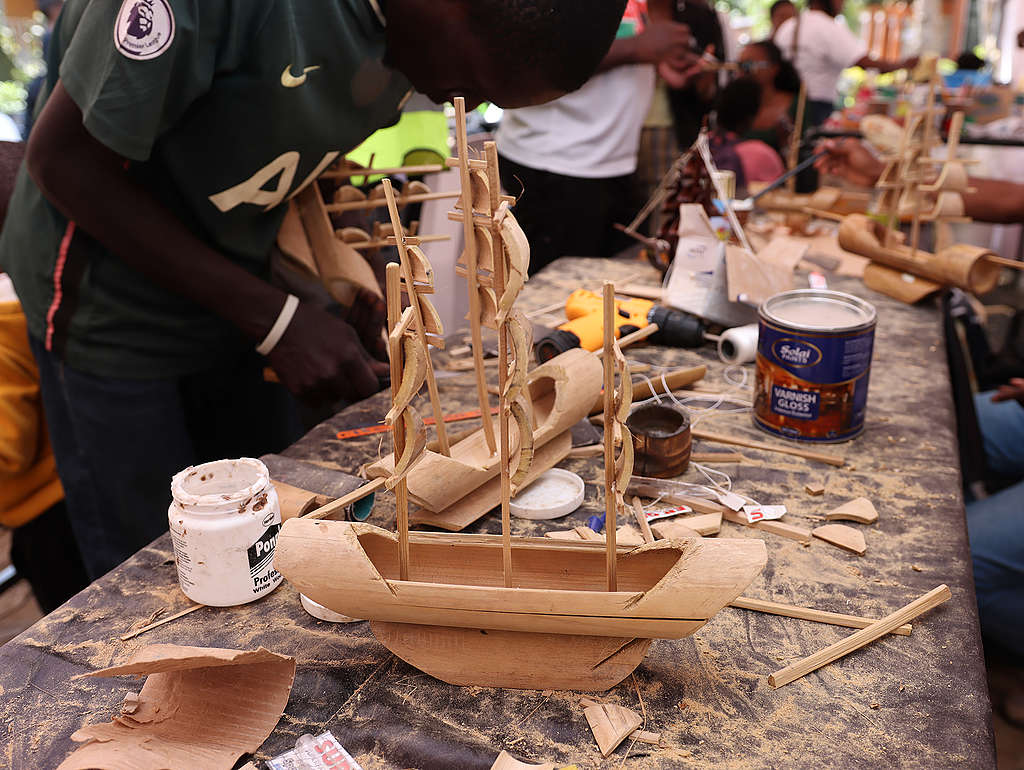
Robert and the team are busy making bamboo ships. Interested individuals surround the table, concentrating on their craft. They started by cutting and shaping bamboo sticks that Kamanu Mbugua of the Small Axe Environmental Youth Group donated. They then assemble the pieces to make the craft. They also made candle holders, bamboo pen holders and a bamboo hanging garden.
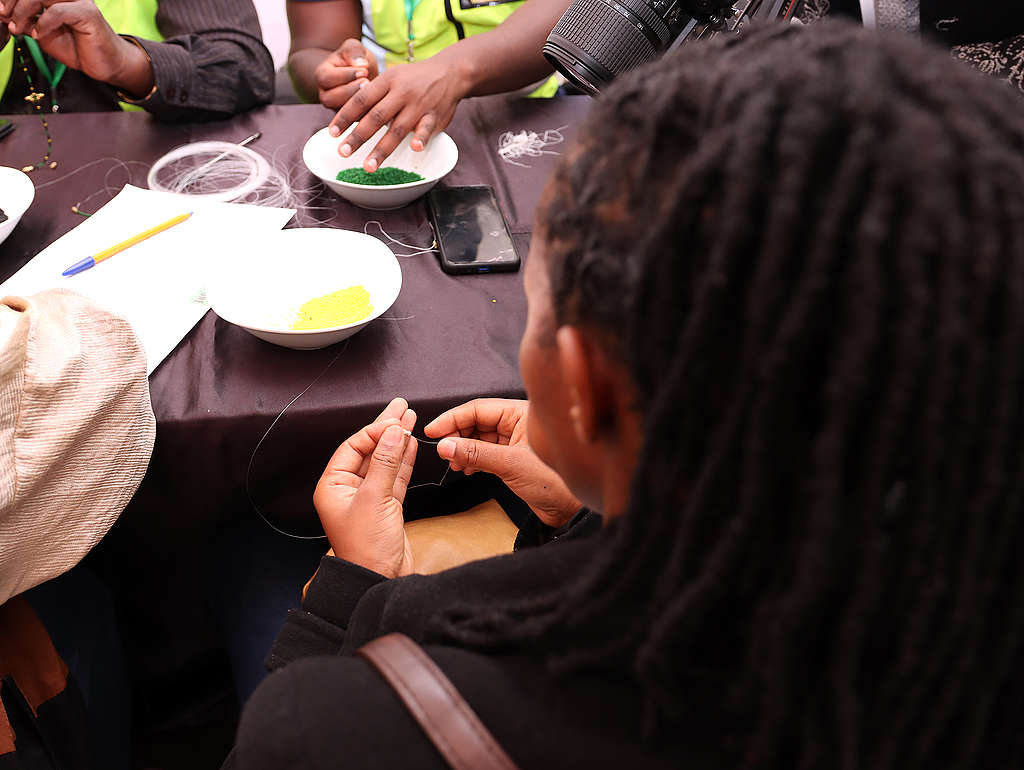
Wangui Ndegwa is a Community Trainer Ubunifu hub. Today she doubles as a beading specialist, and her students are coping well.
She trains them on how to make waist beads, bracelets, wristbands, anklets, necklaces and earrings. They use beads, fasteners, fishing lines, earring hooks and pendants to make them, and from a distance, you can tell it is a fun exercise. One of the participants; a primary school student, tells me she is making a wristband for her mother whose birthday is the next day. She says she could never have thought of a better, more sustainable gift. The joy on her face is priceless! Ndegwa notes that by learning these skills and making them themselves, participants can care more for their items than when they just acquire them in shops at throw-away prices. They can also repair them when broken instead of throwing them away. By engaging in such activities, participants are naturally triggered to be conscious consumers.
Exiting the stage, I am convinced all is not lost and that our challenges present the greatest opportunities to steer towards a more sustainable pathway. Make MAKE SMTHNG your formidable approach to sustainable use, change in culture and fun hands-on experience. Perceive it as what you do to add value to what you already have rather than acquiring what you necessarily do not need.
Peter Bulimo
Community Trainer
Planet One Ubunifu Hub

